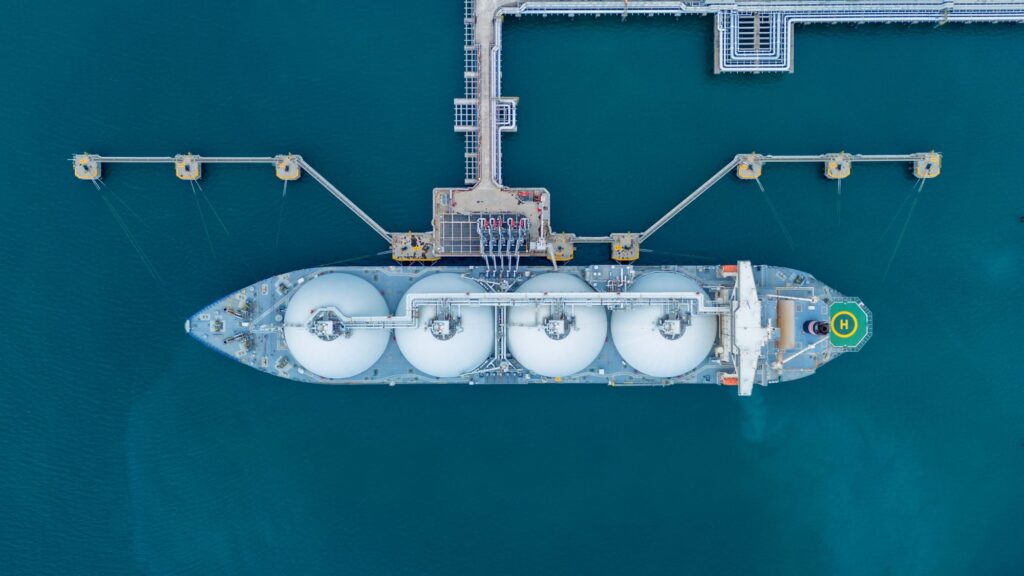LNG Politics: America’s Quiet Empire

According to the U.S. Energy Information Administration (EIA), North America’s liquefied natural gas (LNG) export capacity could more than double by 2029, marking a transformative shift in global energy trade. The EIA’s latest data reveal that U.S. exporters plan to add approximately 13.9 billion cubic feet per day (Bcf/d) of liquefaction capacity by the end of the decade. With this expansion, the United States—already the world’s largest LNG exporter with 15.4 Bcf/dof operational capacity—will significantly strengthen its dominance in global gas markets.
Continental Expansion Across North America
The EIA projects that North American LNG export capacity will increase from 11.4 Bcf/d at the beginning of 2024 to 28.7 Bcf/d by 2029, provided that projects currently under construction become operational as scheduled. The United States remains the central driver of this growth, but Canada and Mexico are also emerging as supplementary contributors, planning to add 2.5 Bcf/d and 0.6 Bcf/d, respectively.
This trilateral expansion reflects a coordinated regional effort to consolidate North America’s position as a global energy hub and diversify global gas supply routes.
Global Significance and the Role of the U.S.
The International Energy Agency (IEA) estimates that North American export capacity additions will account for over 50% of expected global LNG expansion by 2029, positioning the U.S. and its neighbors as central pillars in the world’s evolving energy architecture. This development is not merely economic—it represents a strategic extension of American power across global markets.
By controlling a substantial portion of global LNG supply, Washington strengthens its influence over both energy pricing mechanisms and supply security discussions within the Atlantic alliance, using energy as a tool of soft and hard power alike.
Implications for Europe: Energy Security and Strategic Dependence
For Europe, this shift carries profound consequences. Following Russia’s invasion of Ukraine, European countries have sought to replace Russian pipeline gas with alternative sources, primarily from the United States. As a result, U.S. LNG now constitutes a major share of Europe’s energy imports. The expansion of North American capacity is expected to further deepen this transatlantic energy interdependence, enabling Europe to enhance its short-term energy securitybut also increasing its strategic dependency on U.S. energy exports.
From a geopolitical standpoint, Europe may gain stability and diversification in supply but at the cost of reduced autonomy in energy policy, as the U.S. solidifies its role as both supplier and strategic guarantor of European energy needs.
Energy as a Vector of American Global Power
The U.S. expansion in LNG production and export capacity should also be understood as part of a broader multidimensional power projection strategy. Beyond energy dominance, it reinforces U.S. leadership in the technological, financial, and diplomatic spheres. By using LNG as an instrument of influence, Washington seeks to:
- Reassert its leadership in global energy governance;
- Reduce adversarial influence, particularly that of Russia and Iran;
- Expand its geopolitical reach into regions previously dependent on other suppliers, such as Europe and East Asia.
In this context, energy becomes not only an economic commodity but a geostrategic instrument—one that allows the U.S. to shape global alliances, trade dynamics, and security frameworks.
Conclusion: The Future of Energy Geopolitics
The projected doubling of North America’s LNG export capacity by 2029 marks a decisive shift toward a new energy order dominated by the U.S. and its allies. While Europe will benefit from increased supply diversification, it risks becoming structurally dependent on transatlantic energy flows. This dynamic underscores how the United States leverages its energy infrastructure not merely to balance markets but to extend its geopolitical influence across continents.
In essence, the North American LNG boom represents far more than an industrial achievement—it is the cornerstone of a new global energy geopolitics, where the United States uses LNG to bind economies, secure allies, and project global power well beyond its shores.

